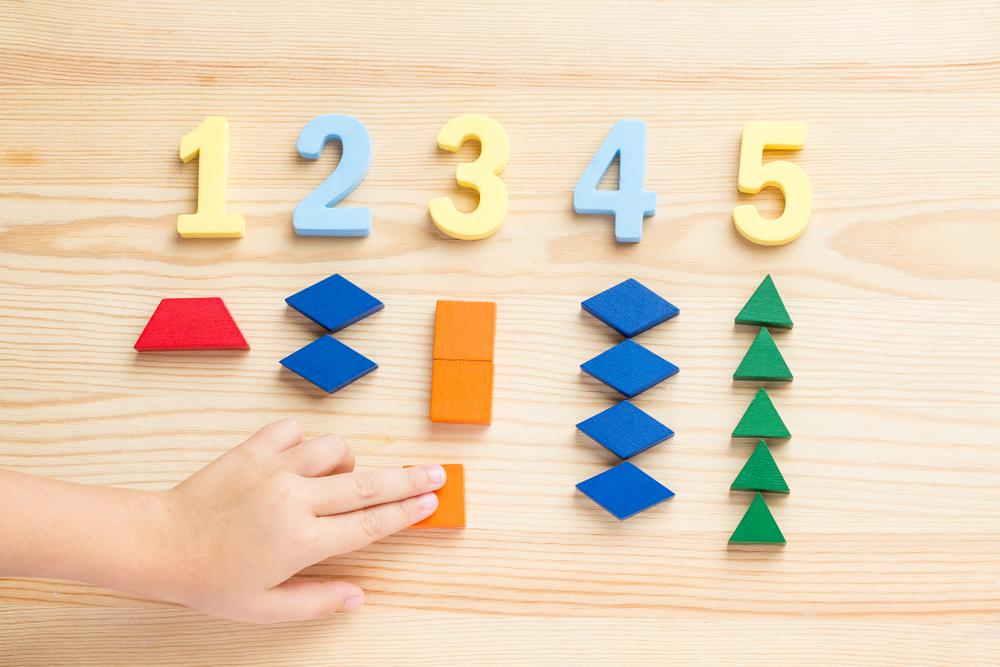Chess rules understanding Worksheets for Ages 5-6
4 filtered results
-
From - To
Unlock the world of chess for young minds with our engaging "Chess Rules Understanding Worksheets" designed specifically for ages 5-6. These worksheets offer a fun and accessible way to introduce the basics of chess, fostering critical thinking and strategic skills in early learners. Each worksheet features vibrant illustrations and easy-to-follow instructions, ensuring that children grasp fundamental concepts like piece movements, special rules, and game objectives. By integrating play with learning, our materials promote cognitive growth while captivating young imaginations. Perfect for both home and classroom settings, these resources make mastering chess rules enjoyable and rewarding for your little learners!
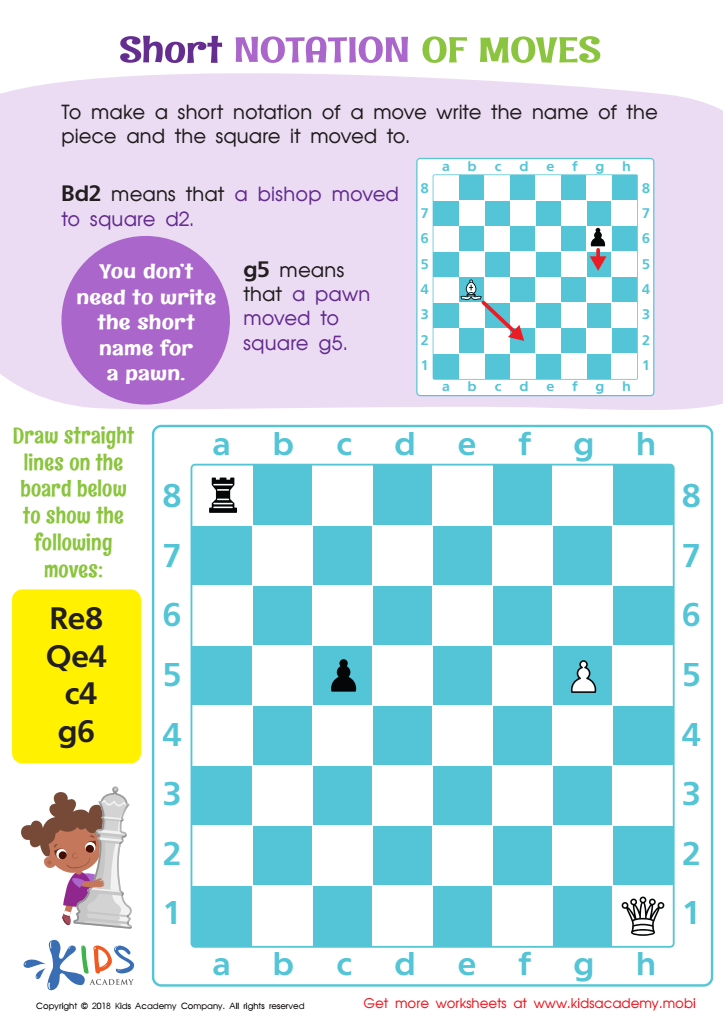

Short Notation of Moves Worksheet
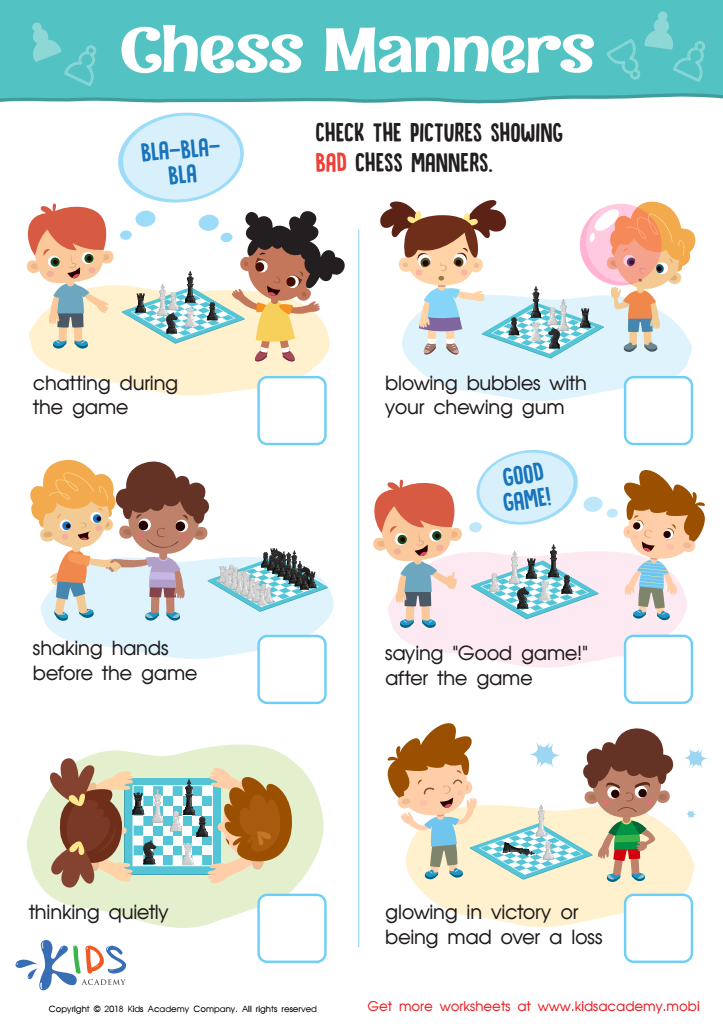

Chess Manners Worksheet
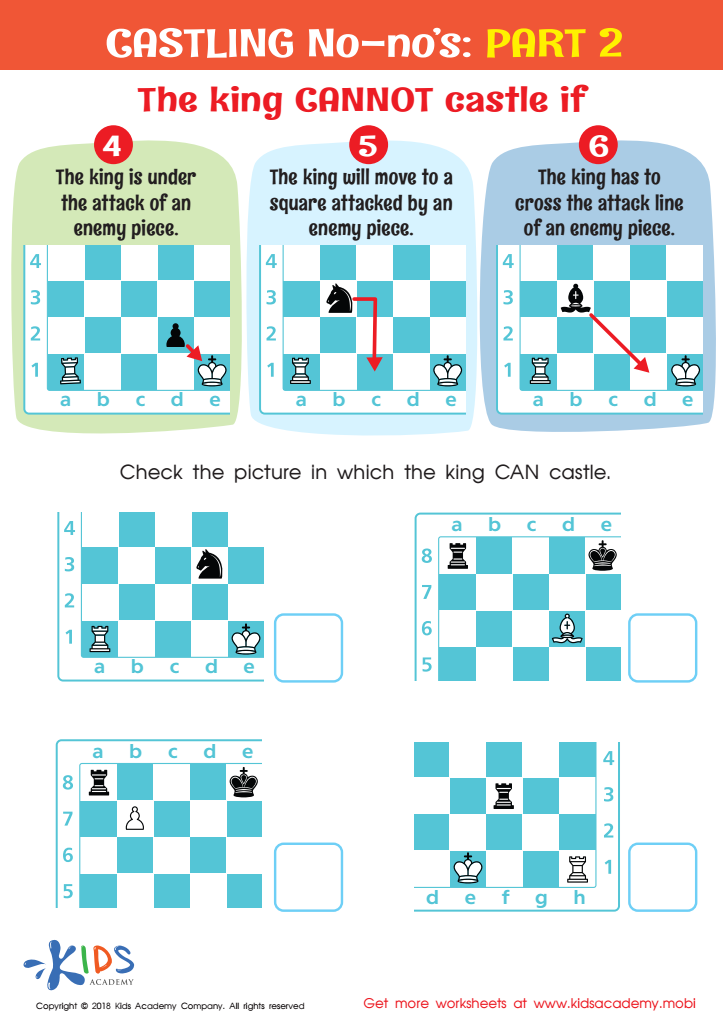

Castling No - no's: Part 2 Worksheet
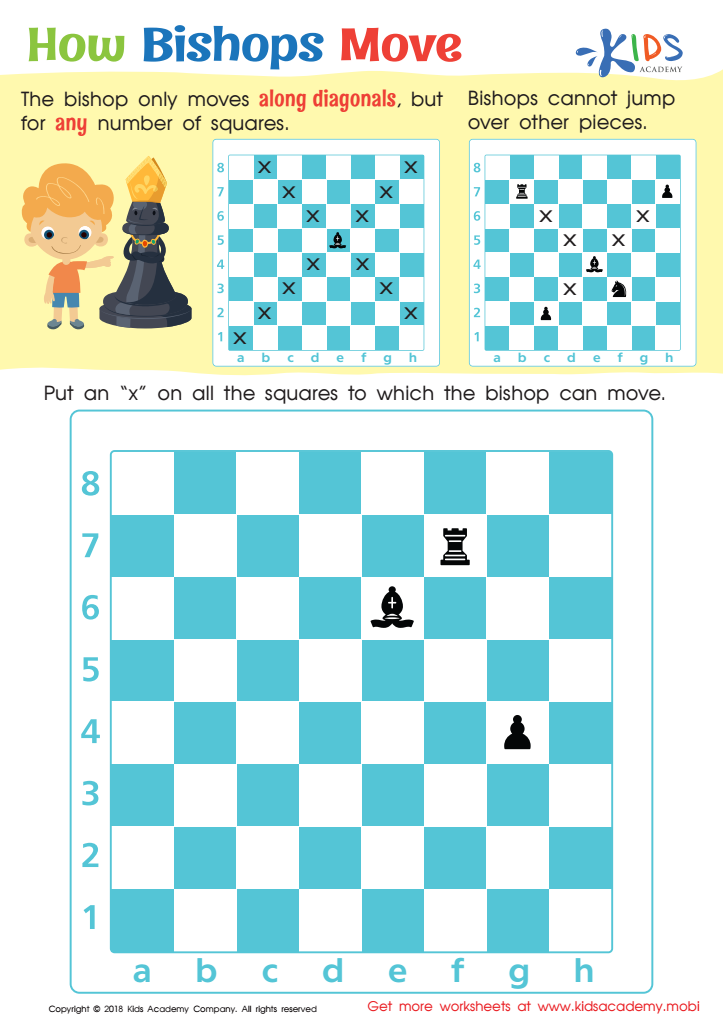

How Bishops Move Worksheet
Understanding chess rules at an early age is essential for parents and teachers because it lays the foundation for critical thinking, problem-solving, and educational development in children ages 5-6. This age is a crucial period for cognitive growth and learning patterns. Introducing chess helps in nurturing these abilities as children become adept at visualizing moves, anticipating consequences, and recognizing patterns.
Furthermore, chess encourages patience and concentration, skills vital for academic success. Mastering the rules fosters a sense of structure and discipline that children can carry into other learning areas. When kids learn the fundamental rules of chess, they simultaneously build a sense of confidence and accomplishment, enhancing their self-esteem and motivation to tackle challenges.
Moreover, chess is a social activity that encourages healthy competition and teamwork, providing opportunities for children to engage with peers, fostering important communication and social skills. Parents and teachers who encourage proficiency in chess rules also promote a love of learning, as the game introduces math concepts, strategy, and logic in an engaging way.
Overall, insisting on chess rule comprehension enriches childhood development, making learning fun and beneficial at a critical stage in life.
 Assign to My Students
Assign to My Students


